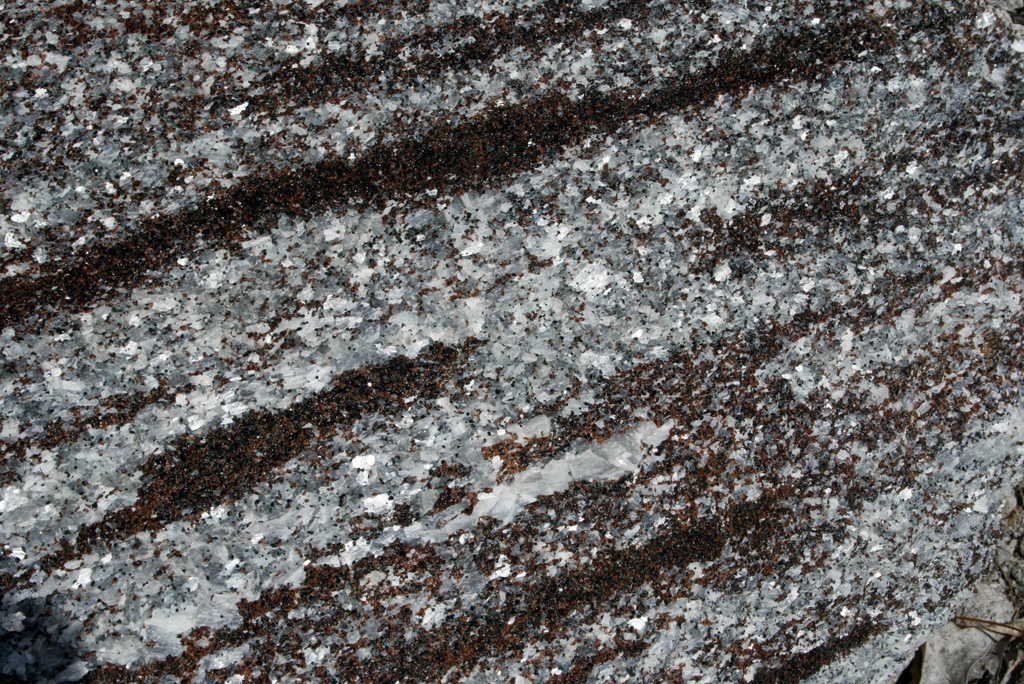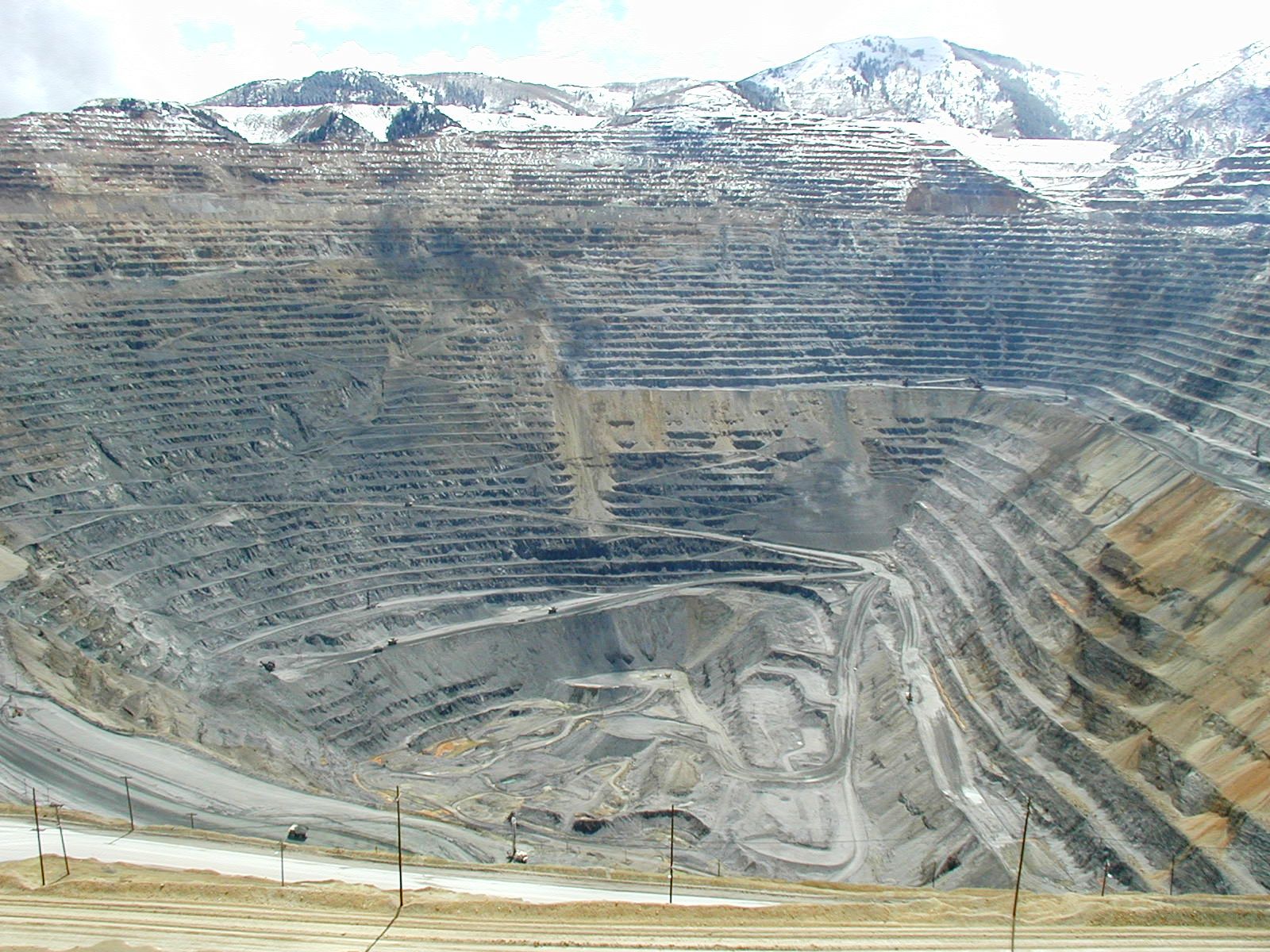Although contact metamorphism by heat conduction from cooling intrusives is restricted in scale, there are possible complications in intrusive settings that can increase the scale, the nature, and the interest of society in the aureole rocks.
- Most magmas contain H2O that separates as an H2O-rich phase as the magma cools and crystallized. This water-rich fluid may pass through the host rock, altering the rock by hydration reactions or other reactions involving elements dissolved in the fluid.
- Fluid percolating through and reacting with the host rock at elevated temperatures, and in a temperature gradient can produce reaction zones, typically with mineral assemblages that have fewer minerals than one might predict using the mineralogical phase rule.
- Contact aureoles involving fluid flow in carbonate rocks, also called skarns, may contain concentrations of minerals and elements making them economically valuable sources of element (ore deposits) such as tunsten and gold (see Meinert, 1992; Meinert et al., 2005).
- In some circumstances, the heat of a magmatic intrusion generates a hydrothermal circulation system that drives the flow of groundwater, altering both the magmatic rocks and the host rocks and in some cases producing ore deposits of elements such as copper and molybdenum (e.g. John et al., 2010).
Samples from and questions about a sequence of contact-metamorphosed rocks can be found in an activity about metamorphosed ultramafic rocks from the Bergell Alps.
Contact metamorphic rocks, even with associated fluid flow, are local occurrences associated with magmatic activity. Regional metamorphic rocks are found over large areas (thousands of km2). What circumstances can produce regional metamorphism?

